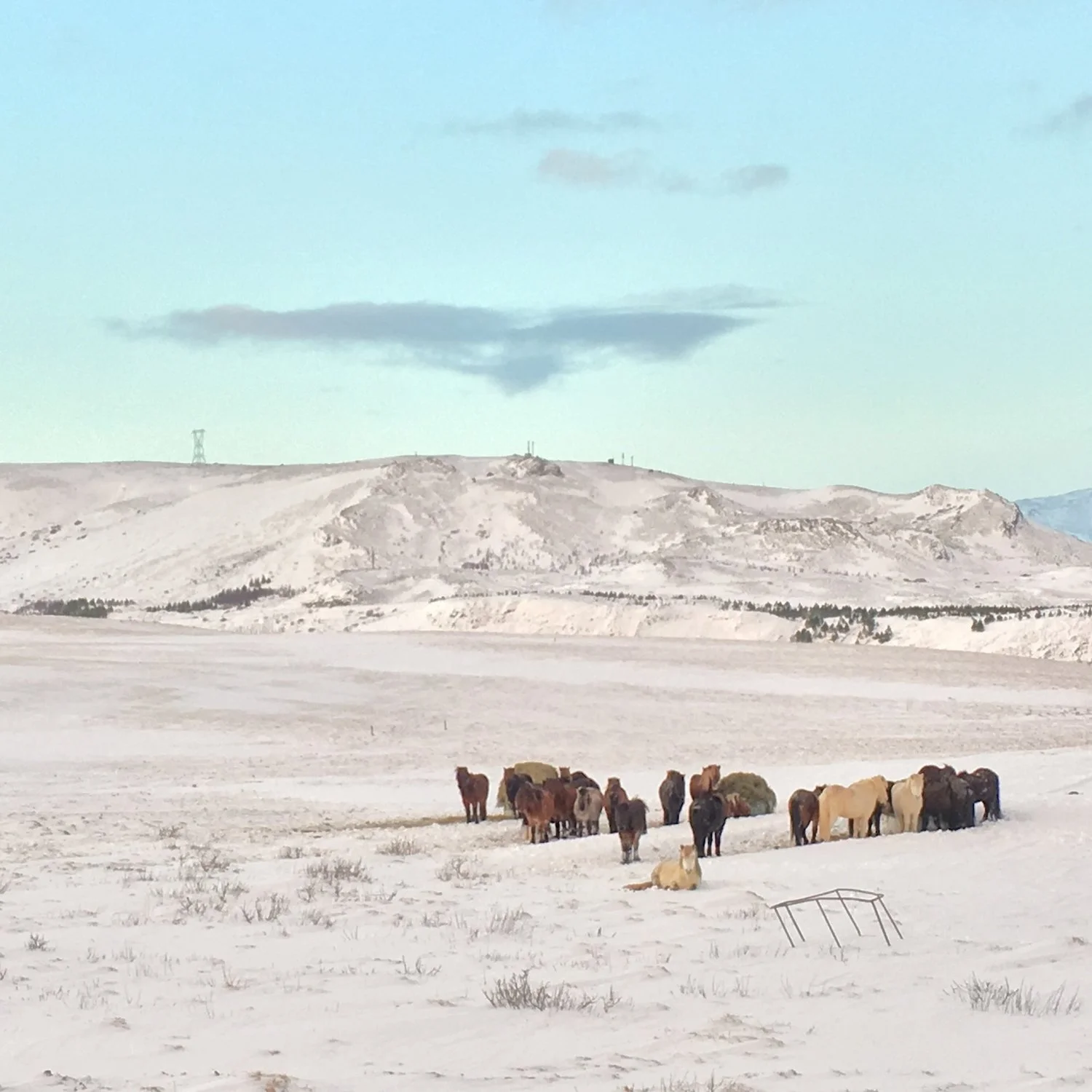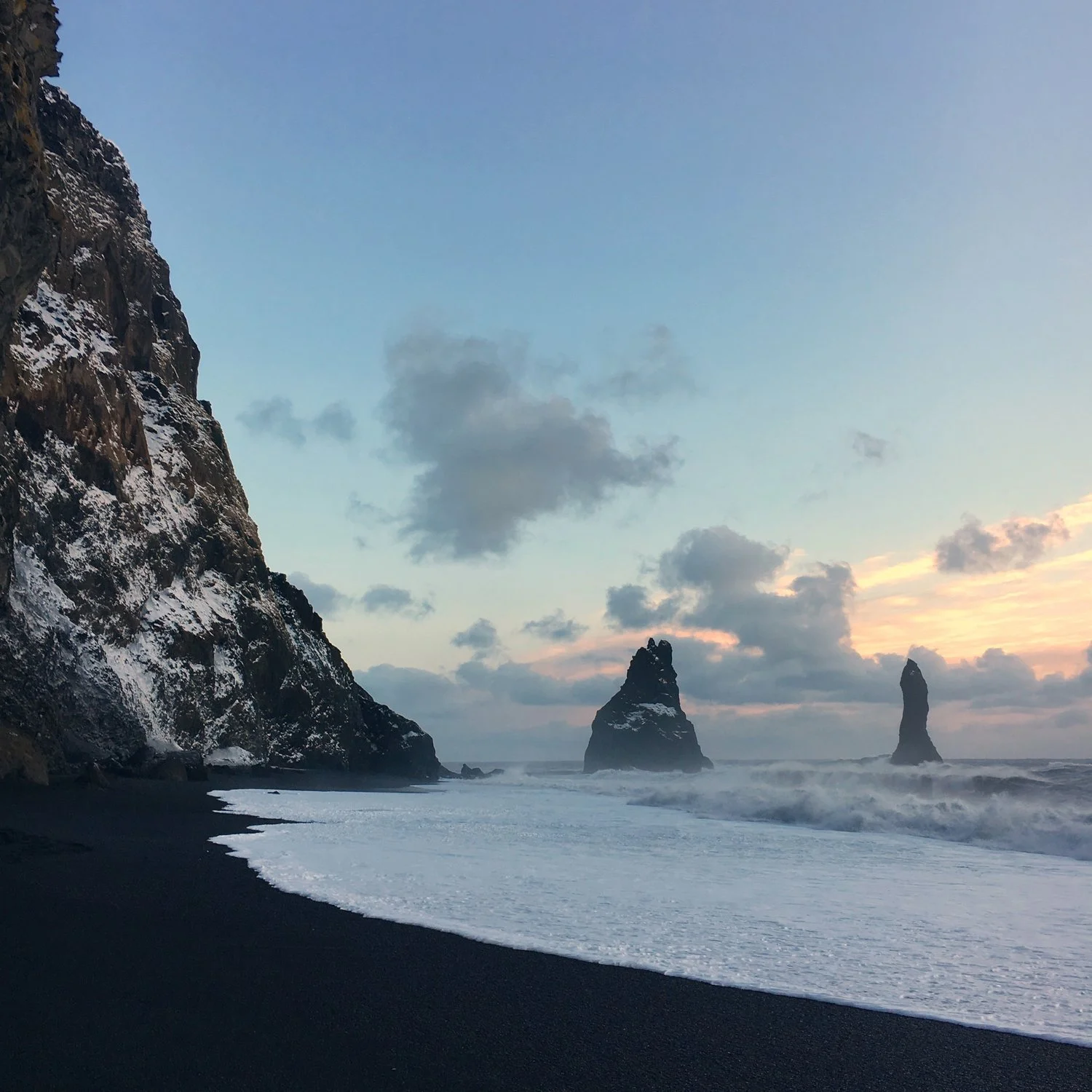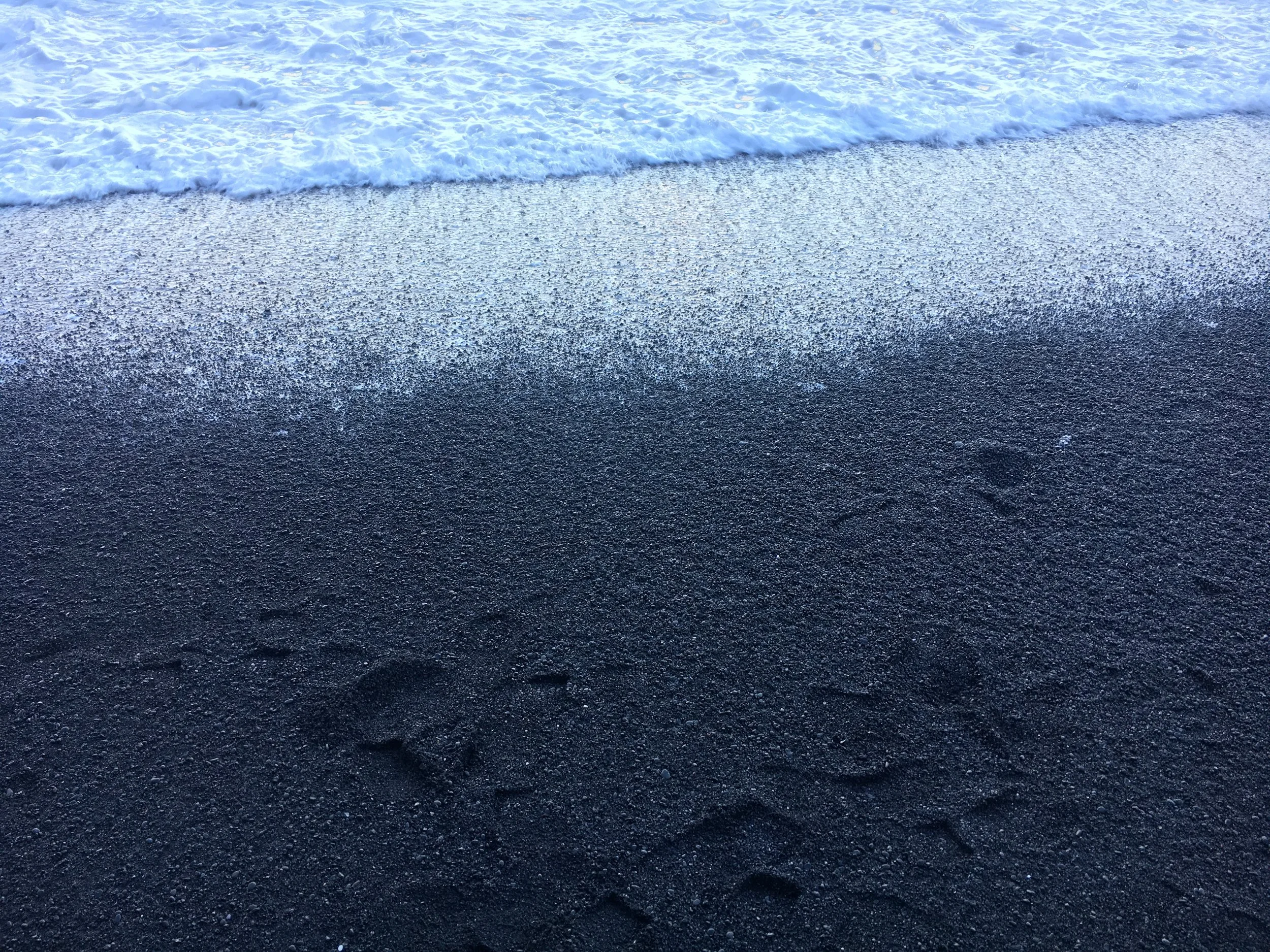Reynisfjara: Iceland’s Black Sand Beach
View of Reykjavík from Hallgrímskirkja
The volcanoes in Iceland play a big part in the country’s unique characteristics: sprouting geysers, geothermal energy, hot spring baths. And among the most intriguing of these is Reynisfjara, the volcanic sand beach located in Vik, a remote town in southern Iceland.
We drove to Reynisfjara from Thingvellir National Park, after leaving our cozy cabin. The drive was pretty straightforward, mostly just following Route 1 (which is also true if you’re driving from Reykjavik), but visibility was low on the day we went (plus we spent some time stuck in the snow on our way out; but that was nothing new, just a daily affair) so it took us much longer than expected. Google maps had quoted us about two hours from Thingvellir, but it took nearly four! It seemed like we were driving through micro weather systems: 10 minutes of sun, 10 minutes of snowstorm, 10 minutes of hail. That being said, when we did have sunlight, the view was absolutely spectacular. Daylight is short during the winter months, and this seems to prolong the periods of sunrise and sunset. For hours at a time, the sky is full of light blue and pink colors, with the sun beaming in the low horizon through the distant hills. This made the drive, at least a good part of the time, sheer joy. Plus, making it even more enjoyable, all along the highway you could see herd after herd of those cute Icelandic horses.
After we arrived and got out of the car, the first thing we noticed at the entrance of Reynisfjara was the safety warning signs. Alongside these were posted several news clips about people who had lost their lives at this beach. Unconsciously, I think, we tried not to be too affected, but it was hard not to read all the details. One particularly sad article was about a man who had been swept away by the waves while proposing to his girlfriend. Needless to say, as we headed toward the same beach, we proceeded with caution.
As soon as we got there, however, our fears were replaced by awe. It was one of the most stunning sights I have ever seen. The jet black sand contrasting with the optic white snow, the wintery evening light casting an unreal glow over it all. And looking further up the coast, you could see cliffs made of the same black basalt lava, as well as caves with geometrical black basalt columns, seeming like a landscape from another world. Off shore are the Reynisdrangar sea stacks, a series of tall craggy rocks, shaped like some kind of ancient ruins, that stand starkly alone out in the ocean. Fierce waves were constantly crashing into these stacks, creating an eerie atmosphere that made you feel like you were part of a Viking saga. I found myself imagining these deadly waves and rocks to be what Iceland’s early settlers had to fight their way through to reach land.
Absorbed by the drama of the landscape, and wanting to get a better picture of the sea stacks, I ventured into a small shallow cave. I knew it was a tricky move, but I felt secure enough, as the waves seemed to end pretty far out. I positioned myself firmly on the ground, and was just about to snap my picture when all of a sudden, I was hit by a wave all the way up to my shoulders! I immediately thought about those news clips. I was terrified. Yet somehow I managed to keep my balance and quickly rush out of the water as the wave pulled back. I ran back toward my friends as fast as I could. It turns out they had just a moment before been wondering fearfully where I was.
I quickly understood that the most dangerous thing about the waves at Reynisfjara is how unpredictable they are. One moment the shoreline is five meters away, and then in the blink of an eye, you are engulfed by water. I was soaking wet and freezing, and since I didn’t bring a change of clothes, I had to remain so for the rest of the ride back to our cabin. (I do admit, this sort of thing seemed to be a recurring theme for me on this trip. You can read about another embarrassing and foolhardy move on my glacier hike post.) Despite my little hiccup, this dangerous coast is one of the most unique beaches I have visited. I would love to go back again in the summertime, during puffin season, to see how these adorable birds alter the landscape. …Also, I believe in summer, it will be a bit safer, although I’m sure I won’t take another such chance again.



